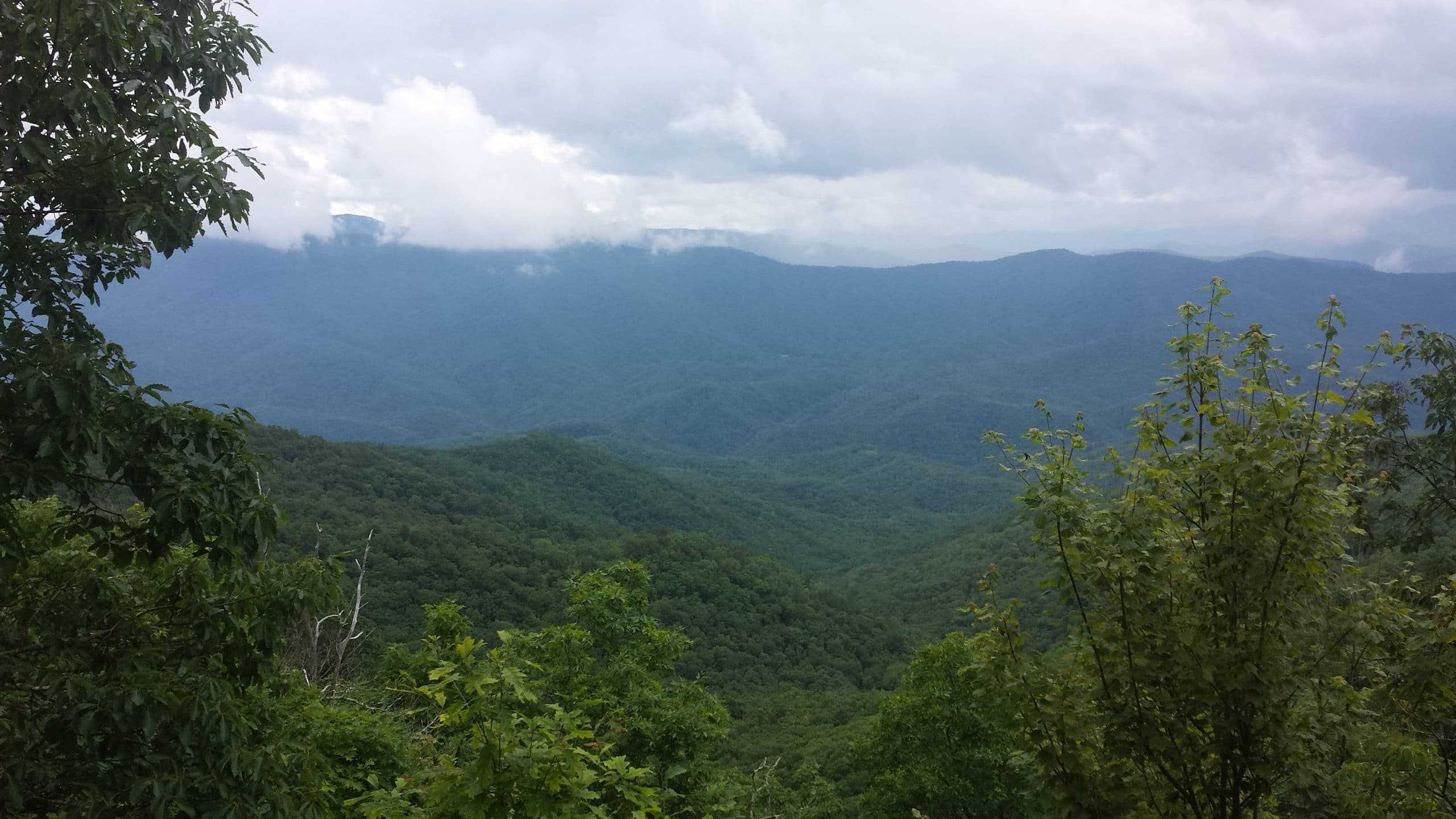A few weeks ago I hiked to the top of Mt. Leconte here in East Tennessee where I live. The sights were beautiful but the weather was not so much. I rained a good part of the day and then when it cleared up it was very hot and humid. I was pouring sweat and I was glad to have chosen a good base layer for this day. In this article I will go over everything you need to know about choosing a good base layer.
Purpose of a Base Layer
The base layer is the first layer in a layered clothing system and in my opinion the key to keeping you comfortable on the trail. A good base layer will protect you from the sun, brush, bugs, and chafing. It will also keep you comfortable by managing moisture and controlling temperature.
A base layer helps control temperature by providing warmth in cold weather and keeping you cool in warmer weather by wicking away your sweat.
Wicking is when moisture forms on your skin and the fabric absorbs the moisture and spreads it out over a much larger area in the fabric. It then lets air pass through and evaporate the moisture very quickly. This helps your body to stay cool and is how a good base layer manages moisture.
A good base layer MUST be made of hydrophobic fibers and not retain water between the fibers causing it to stay wet rather than evaporate it.
What Materials are Used?
Do Not Use Cotton

With basically no wicking ability cotton absorbs a lot of water and will not release it. This causes you to stay wet much longer. This can lead to a lot of problems from being colder to chaffing. Another thing to be aware of is, cotton absorbs heat from your body causing you to loose body heat in the winter.
You will never find anyone recommending cotton as a good base layer.
Polyester
Polyester is an oil based polymer. It is the cheapest and most popular among all of the base layer materials. You can normally find a high performance polyester t-shirt for under $20.

The performance of polyester greatly depends on the fabric weight, weave, and blend. This is not manufacture dependent. I have bought multiple shirts from the same manufacturer but different styles and have them perform completely different.
Polyester can only absorb 0.4 percent of its weight in water but it can absorb much more between the fibers of the fabric while not retaining it. By passing air between the fibers the water is evaporated quickly.
Polyester is terrible for insulation if it gets wet due to such a great amount of heat loss when wet.
It is also the worst with odor resistance. I have found that even when washing polyester shirts at home I have to air dry them quickly or they will sour and have to be rewashed.
Nylon

Like polyester, nylon is also an oil based polymer. It is a little more expensive than polyester but not as expensive as merino wool. Nylon is most often found in trekking pants.
Nylon is not very breathable but it somewhat breathable. It also does not wick or dry as quickly as polyester but it still does better than merino wool. I resists odors better than polyester but not as well as merino wool.
All in all nylon is a mid grade fabric between polyester and merino wool and will most likely be used for pants.
Merino Wool

Merino wool is a classification of sheep wool based on its diameter. It is typically around 17 to 19 microns (a human hair is about 100 microns). Merino wool is not like other wool used in carpets and sweaters. It is soft rather than itchy. The down side is it can be rather expensive.
Merino wool manages moisture by absorbing water into its inner core called the cortex. The outer shell or cuticle is hydrophobic. This means that the moisture in normally not coming into direct contact with your skin. This will help you to stay warm in cold weather is a great base layer material when you expect to be cold.
Merino wool is also antimicrobial and odor-resistant in its natural state. This along with its great insulating abilities makes it a great choice for cold weather when you don’t want to take your base layer off and wash it.
Fabric Weights

When choosing a base layer you will have to decide on a fabric weight. Some manufacturers will have their own rating system for the fabric weights. For example, Patagonia uses their capilene scale and Under Armour uses their Base scale.
When choosing a fabric weight you should remember than thicker fabrics can provide more insulation but will retain more moisture causing you to stay wet longer. Thinner fabrics will wick better and keep you cool in warmer weather.
Expert Tip: When choosing a fabric weight you want to choose the weight that you will not be too hot during the warmest temperatures you will encounter while at maximum exertion.
I hope you found this article helpful in choosing a base layer. Remember a good base layer is the start to beginning a comfortable trip. If you found this article helpful please like and share it so that other hikers can be helped also.
You may also be interested in the next article in this series, Choose An Insulation Layer Your Can Be Warm In.
